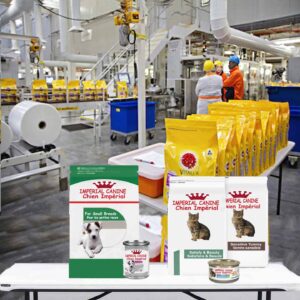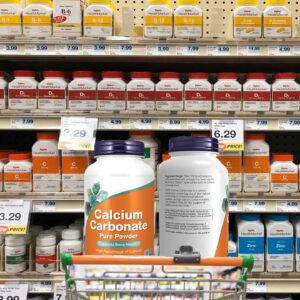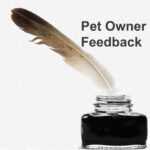Home Cooked Dog And Cat Foods
Homemade Diets And Pet Nutrition
Ron Hines DVM PhD
 Commercial Pet Food Preservatives
Commercial Pet Food Preservatives
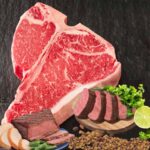

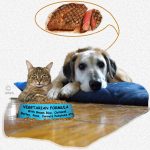
I once gave a list of recipes for preparing your dog or your cat’s food at home from ingredients that you yourself purchase at your local supermarket. Those recipes were based on home-prepared cat and dog recipes that were once provided to me by a veterinarian, Mark Morris. Dr. Morris based his recipes on the NRC publication, Nutrient Requirements of Dogs and Cats. Dr. Morris’ pet food company eventually went on to market a complete line of dog and cat prescription diets. It is now owned by Colgate Palmolive (CP) who no longer provide those recipes for obvious reasons. CP dog and cat food products include all Hills Science Diets. However, their competitors, Purina, Royal Canin, Blue Buffalo, etc. follow in his recipe footsteps when it comes to the ingredients in their products.
Excluding the plant and meat ingredients in the product you purchased, these products all have added industrially-produced vitamins. That is because many of the original vitamins were destroyed when individual ingredients were processed. Others were destroyed by the intense heat of the final extrusion and, when purchased canned, in the sterilization process.
Those vitamins include Thiamine (vitamin B1), Riboflavin (Vitamin B2), Niacin (Vitamin B3), Pantothenic Acid (Vitamin B5), Pyridoxine (vitamin B6), Biotin (Vitamin B7), Folic acid (Vitamin B9) and Vitamin B12. Although they know that dogs and cats make their own Vitamin C, they add that as a preservative. They add the fat soluble vitamins, Vitamin A, Vitamin D3 and Vitamin E (tocopherol). Dry kibbles are packed with tocopherols chiefly as a preservative. Because these products contain so little red meat, they also fortify them with Taurine, L-lysine, DL-methionine, Choline, assorted amino acids, L-Carnitine and various trace minerals. Calcium is also added to compensate for the lack of dietary bone.
If you prepare your dog or your cat’s food at home from your supermarket’s meat and vegetable ingredients, you don’t have to add anything except calcium. Calcium requirements are proportional to your pet’s body weight. Growing puppies and kittens require more than adult pets. Pound for pound, and age per age, your pet’s calcium needs are the same as yours.
Why Do You Think That Commercial Pet Supplements, Other Than Calcium, Are Unnecessary?
70% of adults Americans take vitamin supplements regularly, whereas in the UK only 36% take them. (read here) Yet, the average combined lifespan of a person in the USA is 79 years and dropping while in the UK it is ~81 years.
The average lifespan of a dog in the United States varies greatly by breed. Giant and large breeds live shorter lives than smaller breed. But the average is ~11.5 years. The average life expectancy of a dog in the UK is ~11.5 years. No different from the average dog lifespan in the USA. The average lifespan of a cat in the USA is about 14 years. The average lifespan of a cat in the UK is also about 14 years. Yet in the UK in 2019, 27% of dog owners were cooked from scratch/served leftovers to their pets, up from 22% in 2018. Twenty-one percent of UK cat owners reported cooking from scratch or serving their pets leftovers in 2019 -= up from 13% in 2018. In 2022, nearly two-thirds of UK pet owners (64%) cook a separate meal for their dog at least three times a week. Less than 13% of the US adults when polled said they would rate the honesty and ethical standards of advertising professionals as “high” or “very high”. In the UK, 35% trust advertisers because their advertisers are slightly less likely to lie. That is why I have more faith in nutritional advice provided by the NHS than I do from what emanates from Washington, DC and its lobbyists. Mars alone spent $760,000 on Washington lobbying in 2022 and the year’s not over as I write. Nestlé is up to $521,000 for the year, Colgate Palmolive (think Science Diets) spent $55,000 so far in 2022 and General Mills (think Blue Buffalo) has spent $660,000 so far this year on Washington lobbying to make sure that laws remain in their favor.
Your Pet Doesn’t Need Supplements If You Follow The NHS Recommendations On Their Diet. Here is what they say:
https://www.nhs.uk/conditions/vitamins-and-minerals/
Thiamine: “Liver is a good source of thiamine. Peas are as well. You should be able to get all the thiamine you need from your daily diet. Thiamine cannot be stored in the body, so you need it in your diet every day.”
Riboflavin: “Good sources of riboflavin include: eggs and plain yogurt. You should be able to get all the riboflavin you need from your daily diet. Riboflavin cannot be stored in the body, so you need it in your diet every day.”
Niacin: “Good sources of niacin include: meat, fish, wheat flour & eggs. You should be able to get all the niacin you need from your daily diet. Niacin cannot be stored in the body, so you need it in your diet every day.”
Pantothenic acid: “Pantothenic acid is found in varying amounts in almost all vegetables, wholegrain foods and meats, but good sources include: chicken, beef, liver, and kidneys and eggs. You should be able to get all the pantothenic acid you need from your daily diet, as it’s found in many foods.”
Pyridoxine (Vitamin B6): “Vitamin B6 is found in a wide variety of foods, including pork, poultry, such as chicken or turkey and some fish. You should be able to get all the vitamin B6 you need from your daily diet. The bacteria that live naturally in your bowel are also able to make vitamin B6.”
Biotin (Vitamin B7): “Biotin is needed in very small amounts to help the body make fatty acids. The bacteria that live naturally in your bowel are able to make biotin, so it’s not clear if you need any additional biotin from the diet. You should be able to get all the biotin you need by eating a varied and balanced diet. If you take biotin supplements, do not take too much as this might be harmful.”
Folic acid (Vitamin B9): “Folate is a B vitamin found in many foods. The man-made form of folate is called folic acid. liver is a good source. There are no long-term stores in the body, so you need to eat folate-containing foods frequently. Most people should be able to get the amount of folate they need by eating a varied and balanced diet.”
Vitamin B12: “Good sources of vitamin B12 include: meat, fish, and eggs. If you eat meat, fish or dairy foods, you should be able to get enough vitamin B12 from your diet. But as vitamin B12 is not found naturally in foods such as fruit, vegetables and grains, vegans may not get enough of it.”
Vitamin A: “Good sources of vitamin A (retinol) include: eggs, oily fish, yogurt, liver. You should be able to get all the vitamin A you need from your diet. Any vitamin A that your body does not need immediately is stored for future use. This means you do not need it every day. If you eat liver every week, do not take supplements that contain vitamin A.”
Vitamin E: “Vitamin E is a group of compounds found in a wide variety of foods. Good sources include: plant oils – such as rapeseed (vegetable oil), sunflower, soya, corn and olive oil, nuts and seeds and wheatgerm.”
The National Health Service has nothing to say about Taurine, L-lysine, DL-methionine, Choline, assorted amino acids and trace minerals. However, they are all plentiful in fresh meat. I would not let liver make up more than a small portion of your dog or cat’s diet because vitamin A and vitamin D in liver is high, and it accumulates in the body. I feed calves liver to my pets in moderation once a week. About 10–25 grams per week for each 15 pounds of their body weight. (about a third of an ounce to three quarters of an ounce/week/15 lbs).
It is always tempting to have someone else do the heavy lifting and drudgery. There are profit-motivated companies who will gladly do that for you. However, I suggest that you not go that rout. These companies purchase in tons, not pounds of ingredients. Too many hands, too many machines, too many artificially manufactured vitamins from Asia enter the mix. If it was that good, why did they have to add vitamins? It only takes one sick pig, one sick cow or one sick chicken that was down on its luck with Salmonella to contaminate an entire large production line of pre-packaged pre-mixed ingredients. Buy those ingredients by yourself, at your supermarket, one-by one, so you can look them over, smell them, taste them and perhaps even eat them yourself. Don’t buy ground meat as an ingredient. It is the combined meat of many cows, pigs or poultry and the same increased probability of mass production contamination exists. Especially if you plan to feed them raw. Feed variety. Feed happiness. You can make a week or two’s worth, bag it, then store it in a freezer. I have a freezer just dedicated to the pet food I make. Nothing makes me happier than cooking for my old dog Maxx.
What If My Pet Already Has A Serious Health Issue?
The advice I gave you regarding the health benefits of cooking for your dog and cat was meant for pets that are still in reasonably good health. Once your pet has major health issues, such as liver or kidney disease, a healthful natural diet may not be what is best for it. In those situations, I suggest that you employ the services of a board certified veterinary nutritionist on the staff of a Veterinary school to design a special diet – be it one that is low in phosphorus, or lower in protein or low in iodine, etc. Many will either correspond directly with you for a fee, or correspond with you through your local veterinarian in designing a balanced home-prepared diet or a special-needs recipe. I would prefer one that does not rely on packaged pet supplements. Nutritional tables exist that allow all the required nutrients to be present in the dietary ingredients.
If you would like to share the ingredients of your pet’s diet and let readers know how well your pet enjoyed it and any improvements in its health that occurred after that, please let me know, and I will post your comments here – excluding names, addresses, etc.
Sunday, Oct 9, 4:08 PM
Sun, Oct 9, 4:08 PM
Hi Ron,
You are welcome to use anything I write for your articles, and to use my name, but here’s something based on what I usually send out to people these days:
The best homemade diets include red meat, poultry, fish, liver, eggs, dairy, vegetables, and fruits, with grains and legumes optional. The simpler the diet, the more supplements will be needed. All homemade diets require added calcium (unless the diet includes raw meaty bones that are fully consumed) and vitamin E. Other supplements may be needed if any of these food groups are left out of the diet. See this article for some information about the nutrients provided by these foods: http://dogaware.com/articles/newsdiet.html#recipestudy
The easiest way to feed a homemade diet and know it’s complete and balanced is to use recipes and supplements from Balance IT. You can select which ingredients you want to use, and get multiple recipes to rotate among. The recipes are free; you just pay for the supplements:
https://secure.balanceit.com/recipegenerator_ver4/index.php?rotator=EZ
There’s probably no point in telling people that they are unlikely to do a good job themselves, but it might make sense to warn them against many of the homemade diet books (or just refer them to my book reviews page at http://dogaware.com/diet/bookreviews.html). I also always stress the benefits of feeding variety, no matter what type of diet you feed, rather than relying on a single recipe. Because we don’t fully understand nutrition, and since AAFCO mostly specifies minimums with no maximums, even for nutrients known to cause harm when fed in excess, a single recipe could lead to problems when fed long term even if it meets AAFCO guidelines, so varying ingredients and recipes can help protect against that (which goes for commercial foods as well).
BTW, I also wanted to add something to what I wrote before. You mentioned using Centrum™, and I notice that a lot of vet diets will just say to “include a complete multi-vitamin and mineral supplement.” There are two big problems with this approach. The first is that there is no single Centrum product any longer; the company now lists 29 different multivitamin products on its website (the same is true for the other companies that make similar products). The second is dosage, especially for smaller dogs. Oh, and don’t forget that calcium has to be added separately as well. Way too complicated and prone to error for the average pet owner.
When I was trying to help people formulate homemade diets, I found that most were unable to do a good job. Most people want to feed the same thing every day, and anything too difficult to prepare or source ends up getting left out, so even good recipes rarely work. When I used to do analyses, several nutrients were routinely short, though much depends on what goes into the diet. For example, if there’s no beef (or other red meat), the diet is usually low in iron and zinc, whereas too much beef liver can lead to an excess of copper. Fat may be low if they use very low-fat meats such as skinless chicken breast, or too high if they use something like 80% beef (which can also lead to other deficiencies since you feed so much less of a high-fat diet). Choline, thiamine and riboflavin often came up short. Diets that don’t use much in the way of carbs may be short on potassium or magnesium. Vitamin D will be short if the diet doesn’t include fish or fortified dairy. Calcium must always be added, and in my experience, the same is true of vitamin E. I’ve never seen a diet short on vitamin A, but liver provides many other nutrients that may be low if no liver is included in the diet.
I’m not sure what you consider to be “a well-designed homemade diet.” Most are not at all well-designed, including those from vets that tend to rely on the ubiquitous “complete multi-vitamin and mineral supplement” with no further information provided. Again, see my articles and my book reviews, which were pretty much horrifying:
http://dogaware.com/articles/newsdiet.html#recipestudy http://dogaware.com/diet/bookreviews.html
That’s why I now recommend using Balance IT recipes and supplements. I no longer believe that the vast majority of people are capable of feeding a good homemade diet without being provided recipes, and I still believe that feeding variety is safer than always feeding the same recipe, whether you’re feeding commercial or homemade, so I think it’s important to have multiple recipes rather than just one. I rarely see any recipe, whether online, in a book, or prepared by a vet, that I would consider to be “a well-designed homemade diet.”
When I was trying to help people formulate homemade diets, I found that most were not able to do a good job. Most people want to feed the same thing every day, and anything too difficult to prepare or source ends up getting left out, so even good recipes rarely work. When I used to do analyses, several nutrients were routinely short, though much depends on what goes into the diet. For example, if there’s no beef (or other red meat), the diet is usually low in iron and zinc, whereas too much beef liver can lead to an excess of copper. Fat may be low if they use very low-fat meats such as skinless chicken breast, or too high if they use something like 80% beef (which can also lead to other deficiencies since you feed so much less of a high-fat diet). Choline, thiamine and riboflavin often came up short. Diets that don’t use much in the way of carbs may be short on potassium or magnesium. Vitamin D will be short if the diet doesn’t include fish or fortified dairy. Calcium must always be added, and in my experience, the same is true of vitamin E. I’ve never seen a diet short on vitamin A, but liver provides many other nutrients that may be low if no liver is included in the diet.
I’m not sure what you consider to be “a well-designed homemade diet.” Most are not at all well-designed, including those from vets that tend to rely on the ubiquitous “complete multi-vitamin and mineral supplement” with no further information provided. Again, see my articles and my book reviews, which were pretty much horrifying: http://dogaware.com/articles/newsdiet.html#recipestudy
http://dogaware.com/diet/bookreviews.html
That’s why I now recommend using Balance IT recipes and supplements. I no longer believe that the vast majority of people are capable of feeding a good homemade diet without being provided recipes, and I still believe that feeding variety is safer than always feeding the same recipe, whether you’re feeding commercial or homemade, so I think it’s important to have multiple recipes rather than just one. I rarely see any recipe, whether online, in a book, or prepared by a vet, that I would consider to be “a well-designed homemade diet.”
Your second question about veterinary nutritionists would take me a book to answer! I essentially never recommend them. I wrote another article calling them out about the study, which you can read here, and which will help explain my feelings about veterinary nutritionists:
http://dogaware.com/articles/newsdiet.html#recipestudy
The good news is that at some point after my article above, they improved! They started offering a wide variety of recipes with different goals (e.g., high protein/low-carb or moderate protein/moderate carb). And their veterinary recipes also improved. I now recommend that anyone who wants to feed a homemade diet use their recipes, as unfortunately, my experience has shown that the vast majority of people simply aren’t capable of feeding a good homemade diet without such recipes and supplements. Here is some of the advice I now offer people whose dogs need special diets:
(Kidney diets, after verifying that the dog really needs a reduced phosphorus diet, as vets often tell people to feed these diets whose dogs do not need them and will be harmed by them): If you don’t want to feed a prescription kidney diet, then I would recommend feeding a homemade diet using veterinary recipes from Balance IT that use their Heatable Canine K Plus supplement. These recipes require your vet’s approval, but they make that easy to get. Choose Kidney Disease, then select “Early Kidney – Lower Phosphorus Using Heatable Canine K Plus (Dogs Only)” (only use their Canine K Plus, never their original Canine K, which includes phosphorus):
https://secure.balanceit.com/tools/ez2/
(Low-fat diets): The easiest way to feed a low-fat homemade diet is to use low-fat recipes and supplements from Balance IT. The Nutrient Profile they provide shows “Amount per Mcal” for each nutrient — look at the row titled “[204] Total lipid (fat).” This value is the same as what I called GFK (grams of fat per thousand calories) in my article (http://dogaware.com/articles/wdjlowfatdiets.html). That number should be no higher than 25 for dogs recovering from acute pancreatitis or who have severe fat intolerance. You can adjust the amount of fat in the recipes downward, within reason. If necessary, you can request an even lower fat veterinary diet with your vet’s approval (which they make easy to get).
https://secure.balanceit.com/recipegenerator_ver4/index.php?rotator=EZ
BTW, they also offer cat recipes.
Mary
*************************
Wed, Aug 31, 2022 4:23 PM
Hi Ron,
Regarding Gilbert’s kidney diet and related materials: The CKD diet I had made at University of Tennessee by Dr. **** *** ****** Her email address is on the diet formula, and her phone number. It was calculated based exactly on the proportions that I got from Royal Canin for their Multifunction Hydrolyzed Protein Kidney diet. Dr. ****** used these numbers based on Gilbert’s 12 pound weight and his estimated calorie needs, as stated on the diet. A breakdown of Alligator meat shows that it has advantages over venison and elk. But venison meat was included. Purina’s NF Kidney Function Early Care (There is an advanced care with an even smaller amount of protein and thus even less phosphorus). I bought the Balance IT supplement. Balance IT sells a kidney diet of their own. Gilbert liked the venison. But he wouldn’t eat the diet after the other ingredients were added. Perhaps, I should have introduced him much more slowly or eliminated things he may not have liked. For allergies, we used a novel meat that he hadn’t eaten in the past. I should have made a full sample batch, first, with all or part of the ingredients before purchasing the full diet from Dr. ******.
Best regards, Neal, in Nevada
You are on the Vetspace animal health website
Visiting the products that you see displayed on this website help pay the cost of keeping these articles on the Internet.


